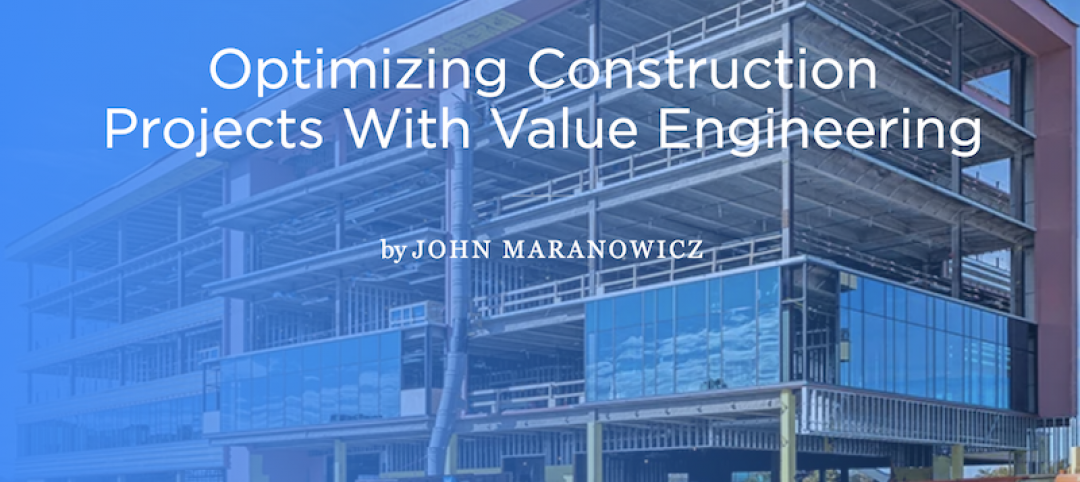“Motivation and Means: How and Why IPD and Lean Lead to Success”, co-sponsored by the Integrated Project Delivery Alliance, explodes several myths about Lean and IPD.
Myth #1: Delivery matters less than choosing the right people; behaviors can’t be dictated by a contract. You won’t get the A Team every time, but you can still foster positive behavior, says principal author Renée Cheng, PhD, AIA, Professor, School of Architecture, University of Minnesota. Think through which players you want on your team, how to create the right culture, and how to get rid of nonperformers.
Myth #2: IPD contracts are too complicated, Lean tools are too rigid. IPD and Lean are “a lot more flexible than people think,” says Cheng. Investing the time up front for designing your IPD and Lean procedures can pay off in huge ROI. Teams also vary in how they use IPD and Lean. It’s not as rigid as commonly believed, she says.
Myth #3: IPD only works on large complex healthcare projects. Teams new to IPD and Lean are at a disadvantage. Cheng says there’s no evidence that small projects cannot benefit from using an IPD and Lean. Moreover, you can have a team that’s new to IPD, or one that has half its team members experienced in IPD and Lean, and both can still work, she says.
Myth #4: Owners aren’t getting best value; or, owners are getting value but the team is not making a profit. Cheng says it’s hard to get at “pure results” for owners because “it usually depends on how well the owner sets the cost and schedule targets.” The research did show that 100% of owners in the study said their IPD/Lean projects met or exceeded expectations.
In terms of meeting schedule, some teams were just a bit over, a number were under. Similarly, with regard to budgets, one project team went over, some were at budget, a number were under.
As for profitability, Cheng says some project teams have reported making 20-30% more in an IPD than under a non-IPD. “I did see teams working collectively with the owner to determine a target cost, and this drove the original allowable cost way below market, and the profit was distributed.”
Myth #5: IPD and IPD-lite are essentially the same; financial incentives and release of liability are no big deal. Cheng says the behavior is “strikingly different” between those who have skin in the game and those who do not. “Those in the signatory pool behave much more collaboratively, there’s a lot more fluidity in how they’re willing to trade scope, and they’re much more willing to call out behavior that’s not productive.”
Finally, there’s a lot more “fun and enjoyment” in true IPD projects, says Cheng—“a lot more time being spent on positive things. It’s very positive and collaborative.”
Related Stories
Contractors | Jan 7, 2021
The Weekly show, Jan 7, 2021: Preconstruction boot camp, and leadership strategies for navigating a challenging market
The January 7 episode of BD+C's The Weekly is available for viewing on demand.
Contractors | Jan 4, 2021
Optimizing construction projects with value engineering
When value engineering is referenced in our industry, our minds may immediately go to a process that reduces project cost by slashing scope or decreasing the quality of materials used. However, that is not necessarily what the definition should be.
AEC Tech | Dec 17, 2020
The Weekly show: The future of eSports facilities, meet the National Institute for AI in Construction
The December 17 episode of BD+C's The Weekly is available for viewing on demand.
Multifamily Housing | Dec 16, 2020
What the Biden Administration means for multifamily construction
What can the multifamily real estate sector expect from Biden and Company? At the risk of having egg, if not a whole omelet, on my face, let me take a shot.
Giants 400 | Dec 16, 2020
Download a PDF of all 2020 Giants 400 Rankings
This 70-page PDF features AEC firm rankings across 51 building sectors, disciplines, and specialty services.
Healthcare Facilities | Dec 10, 2020
The Weekly show: The future of medical office buildings, and virtual internship programs
This week on The Weekly show, BD+C editors spoke with leaders from SMRT Architects and Engineers and Stantec about the future of medical office buildings, and virtual internship programs
Contractors | Dec 4, 2020
‘Speed to market’ defines general contractor activities in 2020
Contractors are more receptive than ever to ways that help get projects done faster.
Multifamily Housing | Dec 4, 2020
The Weekly show: Designing multifamily housing for COVID-19, and trends in historic preservation and adaptive reuse
This week on The Weekly show, BD+C editors spoke with leaders from Page & Turnbull and Grimm + Parker Architects about designing multifamily housing for COVID-19, and trends in historic preservation and adaptive reuse
Giants 400 | Dec 3, 2020
2020 Science & Technology Facilities Giants: Top architecture, engineering, and construction firms in the S+T sector
HDR, Jacobs, and Turner head BD+C's rankings of the nation's largest science and technology (S+T) facilities sector architecture, engineering, and construction firms, as reported in the 2020 Giants 400 Report.
Giants 400 | Dec 3, 2020
2020 Laboratory Facilities Sector Giants: Top architecture, engineering, and construction firms in the U.S. laboratory facilities sector
Affiliated Engineers, HDR, and Skanska top BD+C's rankings of the nation's largest laboratory facilities sector architecture, engineering, and construction firms, as reported in the 2020 Giants 400 Report.

















